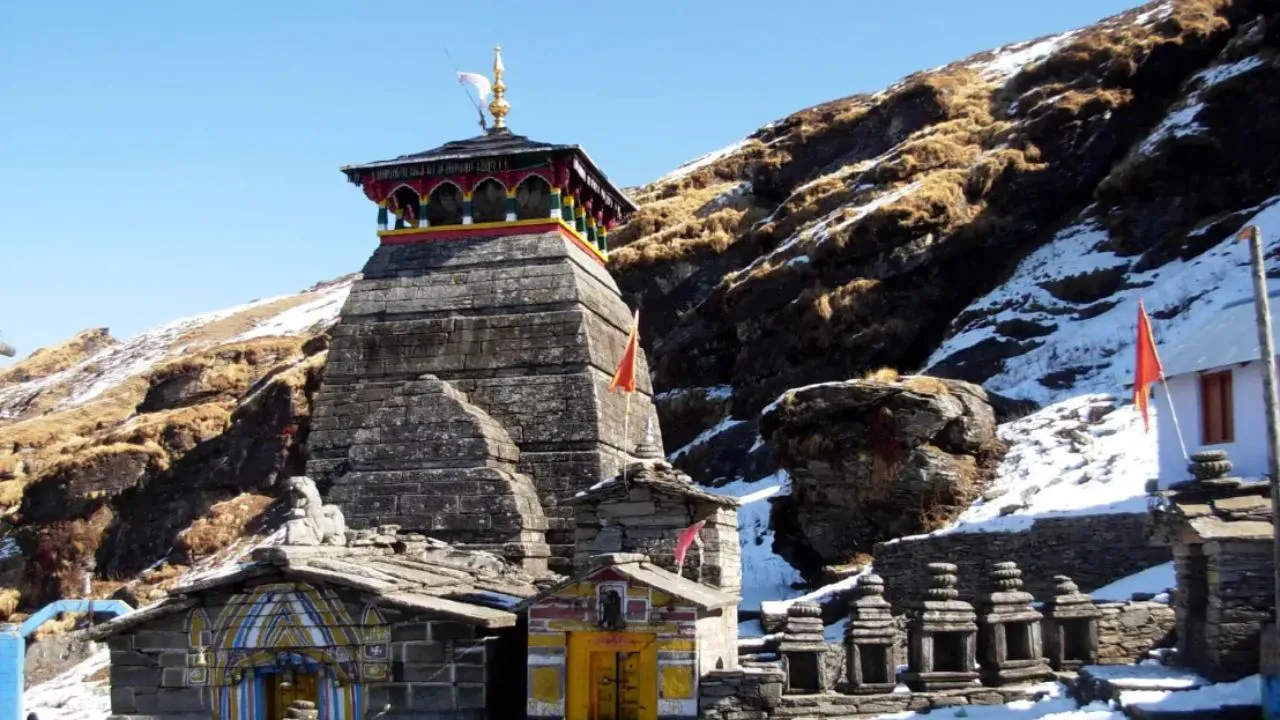Nestled at an altitude of 3,680 meters in Uttarakhand’s Rudraprayag district, Tungnath—the world’s highest Shiva temple—is facing alarming structural damage due to severe weather conditions, particularly during the monsoon season. This ancient temple, believed by locals to have been built by the Pandavas after the Kurukshetra war in the Mahabharata, is now battling subsidence, water leakage, and a weakening foundation, prompting authorities to take immediate action.
Table of Contents
Monsoon Rains Worsen Structural Damage
The continuous heavy rains this monsoon have aggravated the already existing issues at the revered Tungnath temple. With its foundation showing signs of weakening, shifting slates on the temple’s walls, and persistent water leakage, the temple’s structural integrity has come under threat, raising concerns for the safety of visiting devotees and tourists alike.
Ajendra Ajay, chairman of the Badrinath Kedarnath Temple Committee (BKTC), expressed concern about the temple’s deteriorating condition. “The temple is facing serious issues like subsidence, weakening foundation, and shifting wall slates, which have caused water leakage, especially during the rainy season,” Ajay stated. He emphasized the urgency of the situation and highlighted the steps being taken to address these challenges.
Expert Teams Deployed for Assessment
Recognizing the gravity of the situation, the BKTC sought help from key national institutions. The Geological Survey of India (GSI) and the Archaeological Survey of India (ASI) both dispatched expert teams to Tungnath in September to assess the extent of the damage and provide guidance on restoration.
Though the temple is not officially under the protection of the ASI, their team visited the site to offer valuable recommendations. Manoj Saxena, superintendent archaeologist at ASI, told Times of India: “While the temple is not officially protected by ASI, our team visited the site and gave our recommendations. Now it is up to the temple committee and the Uttarakhand government to take the necessary actions.”
The Central Building Research Institute (CBRI) has also been consulted to ensure the safety and stability of the temple’s structure. The recommendations provided by these expert bodies will help shape the restoration efforts to preserve this ancient temple for future generations.
Government Prioritizes Restoration Efforts
Uttarakhand’s tourism minister, Satpal Maharaj, addressed the growing concerns about Tungnath’s structural issues. He confirmed that the state government has made the temple’s repair a top priority. “Given the temple’s water leakage and structural problems, the government is prioritizing its repair to ensure the structure remains safe for all visitors,” said Maharaj.
The temple committee, in coordination with the Uttarakhand government, will implement the expert recommendations to mitigate further damage. With the continued support of national institutions like the GSI, ASI, and CBRI, the authorities aim to preserve the ancient temple’s architectural and religious significance.
A Sacred Heritage Under Threat
Tungnath temple is not only an architectural marvel but also a site of deep religious significance for devotees of Lord Shiva. As one of the Panch Kedar temples, it draws thousands of pilgrims annually, many of whom undertake the challenging trek to seek blessings. The temple’s construction, dating back to ancient times, is revered for its connection to the legendary Pandavas of the Mahabharata.
However, the structural vulnerabilities exposed during this monsoon season have raised concerns about the future of this heritage site. For the local community, Tungnath’s preservation is of paramount importance, not only for its religious value but also as a critical site for Uttarakhand’s cultural and tourism sectors.
Call for Long-Term Conservation
While immediate repair efforts are underway, experts have stressed the need for a comprehensive long-term conservation plan. The unique location of Tungnath temple, combined with the region’s challenging weather conditions, requires an approach that goes beyond temporary fixes. Preserving the temple’s legacy will involve advanced structural reinforcement, water management systems, and ongoing maintenance to withstand future monsoon seasons.
The cooperation between the temple committee, government bodies, and expert institutions offers hope that Tungnath’s structural issues will be addressed in time, safeguarding this sacred monument for future generations.
Conclusion
Tungnath, the highest Shiva temple in the world, stands at a critical juncture as it faces the brunt of severe weather damage. With a weakening foundation and structural issues, immediate action is being taken by the Badrinath Kedarnath Temple Committee, alongside experts from the GSI, ASI, and CBRI, to ensure that the temple remains safe and intact. As restoration efforts commence, the combined support from local authorities and national institutions promises to protect this ancient site and maintain its significance for years to come.

